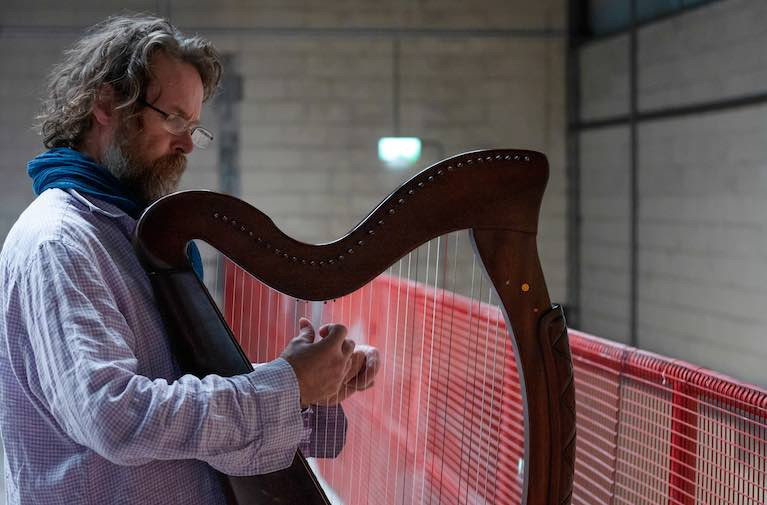The fragility of coastal languages, music and poetry will be celebrated by ten artists from five countries with minority languages at a Galway 2020 show opening in south Connemara next week.
Musician Liam Ó Maonlaí, who participated in the last voyage on the currach Naomh Gobnait with late poet Danny Sheehy in 2017, is one of ten artists from five countries involved in the musical production for Galway 2020 named “Óró..”
The musicians, actors, dancers and poets from Ireland, Scotland, the Basque Country, Cornwall and Friesland in the Netherlands are working in a closed set during rehearsals in Gailearaí an Tismeáin in An Cheathrú Rua.
Cast members have been Covid-19 tested, and those who travelled over have all quarantined, according to production manager Alana MacInnes.
The industrial space owned by Údaras na Gaeltachta is so large that it is “ideal” for socially distancing, MacInnes explains.
“We have a total of 17 crew and cast, and so the audience is limited to 33 for each show, but we are trying to be as creative as we can with the space,”she says.
“Thankfully we have managed to keep transnational art-making alive in Europe as we face this Covid-19 challenge together,” she says.
“Óro...” is directed and produced by award-winning actor, writer and director Darach Mac Con Iomaire, who is best known for his productions of Baoite and Corp agus Anam.
The production for Ealaín na Gaeltachta, which was commissioned by Galway
2020 European Capital of Culture, promises a story of “language, survival and identity”, with all performers using their native languages.
On the set with Ó Maonlaí are fellow musician and composer Maitiú Ó Casaide; actors Diarmuid de Faoite and Síle Nic Chonaonaigh; contemporary dancer Sibeal Davitt; visual artist Sean Ó Flaithearta; Basque dancer Amaia Elizaran; Scottish singer Josie Duncan; Frisian painter and poet Anne Feddema; and Cornish poet Taran Spalding-Jenkin.
It will have its premiere on Monday, September 21st and will run for eight performances only, with matinees the following weekend.































































